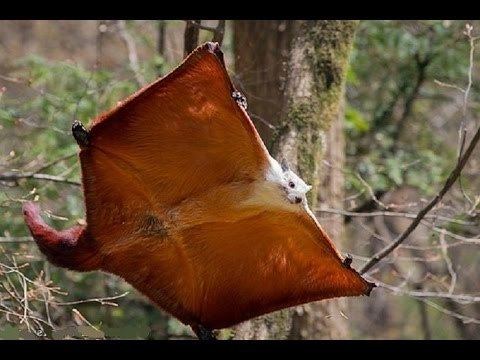Kingdom Animalia Genus Petaurista Phylum Chordata Rank Species | Family Sciuridae Scientific name Petaurista petaurista Higher classification Petaurista Order Rodent | |
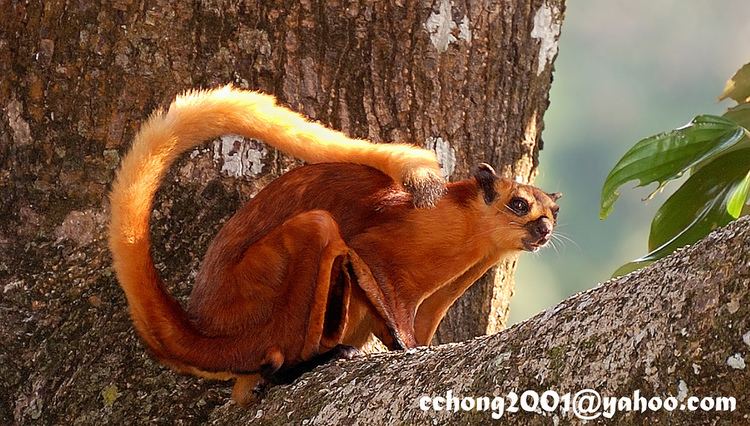 | ||
Similar Petaurista, Indian giant flying squirrel, Spotted giant flying squirrel, Hylopetes, Oriental giant squirrel | ||
Red giant flying squirrel
The red giant flying squirrel or common giant flying squirrel (Petaurista petaurista) is a species of flying squirrel, found in northern South Asia, southern China and Southeast Asia. It is a dark red colour with black extremities and can grow to a head-and-body length of 42 cm (17 in). The tail is long and provides stability when it glides between trees. It is nocturnal, feeding mainly on leaves, fruits and nuts, and occasionally insects. This squirrel faces no particular threats apart from ongoing destruction of suitable habitat. It has a wide range and is relatively common, and the International Union for Conservation of Nature lists it as a "least-concern species".
Contents

Red giant flying squirrel
Distribution

The red giant flying squirrel is native to Asia, its range extending from Afghanistan, into northern India and Pakistan through to Java, and Taiwan, and also Sri Lanka. It can also be found in parts of Borneo. This species was recorded in Peninsular Malaysia, included Penang, Tioman Island and also Singapore. This species also recorded from many localities throughout Sabah and Sarawak, up to 900m on Mount Kinabalu, excluding the range of P. p. nigrescens, which is known only from the forests around Sandakan Bay north of Kinabatangan River.
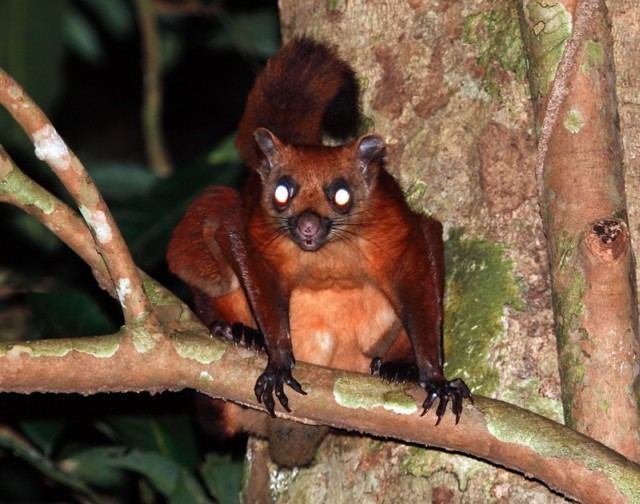
Giant flying squirrels (Petuarista sp.) have highest diversity in term of species richness and population diversity in Southeast Asia.
Identification
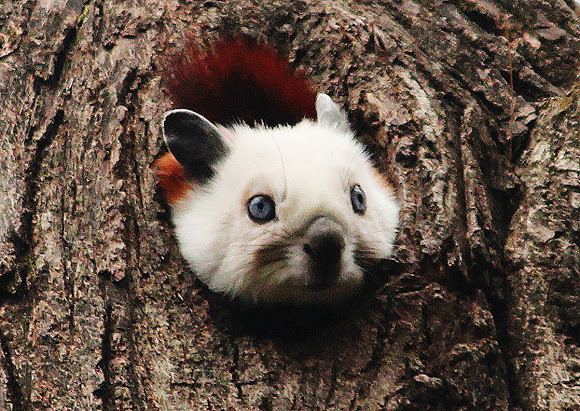
Like all other species of flying squirrels, it has a membrane of skin between its legs and arms, which is used to glide between trees. It is characterised by its dark red colouring and large eyes. When compared to other species of squirrels, this species is large, being on average 42 cm (17 in) long, with a long slender tail. Entire body dark reddish except for black on nose, chin, eye-ring, behind the ears, feet and tail tip.
Ecology and habitat
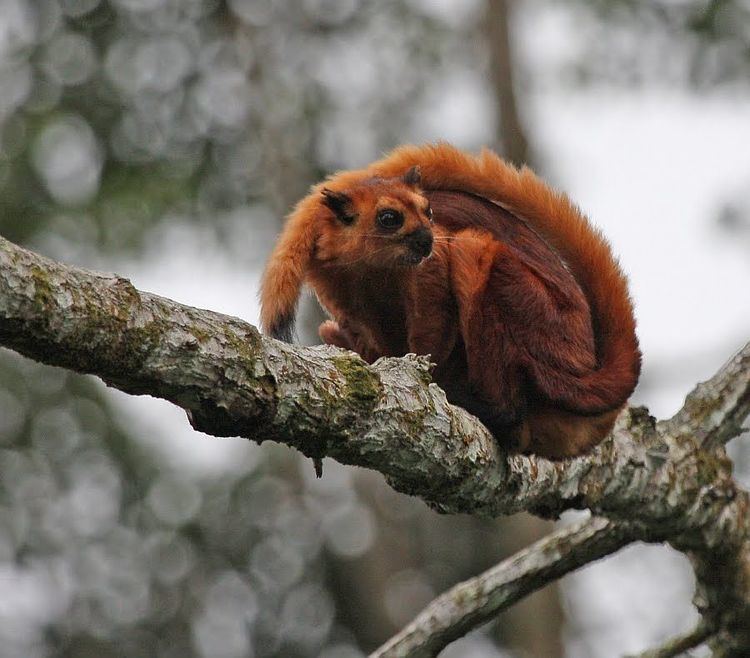
In the wild, it feeds primarily on conifer cones, leaves and branches, and, when in season, fruits and nuts, and occasionally insects. It is able to glide for long distances. There have been reports of distances up to 75 metres (250 ft.) or greater; glide angles are generally 40-60 degrees from the horizontal, occasionally steeper for shorter glides. Their nest holes usually at least 10m above ground. The red giant flying squirrel is nocturnal and does not hibernate, but migrates to areas with more food. P. petaurista also able to explore secondary conifer plantations and use this habitat as feeding and resting areas.
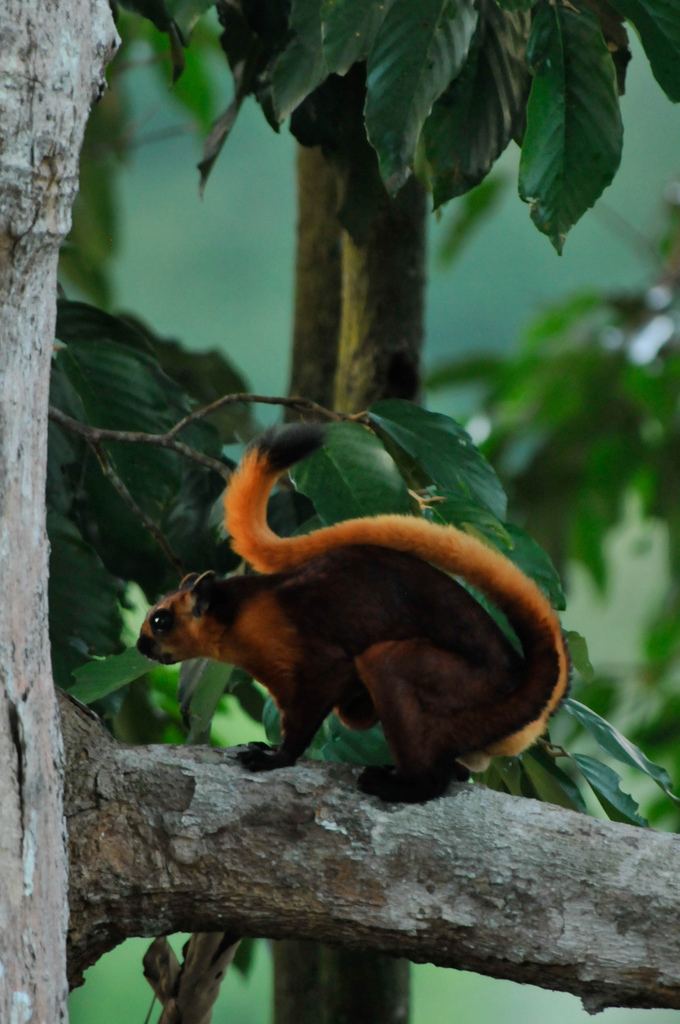
P. petaurista is most active between sunset and midnight and the home range of adult females in conifer plantation was estimated to be 3.2ha

The red giant flying squirrel is believed to mate twice a year but females usually breed once a year. The young are born in February and August in litters of one to two. This squirrel faces no particular threats apart from ongoing destruction of suitable habitat. It has a wide range and is relatively common, being present in a number of protected areas, and the International Union for Conservation of Nature lists it as a "least-concern species".
